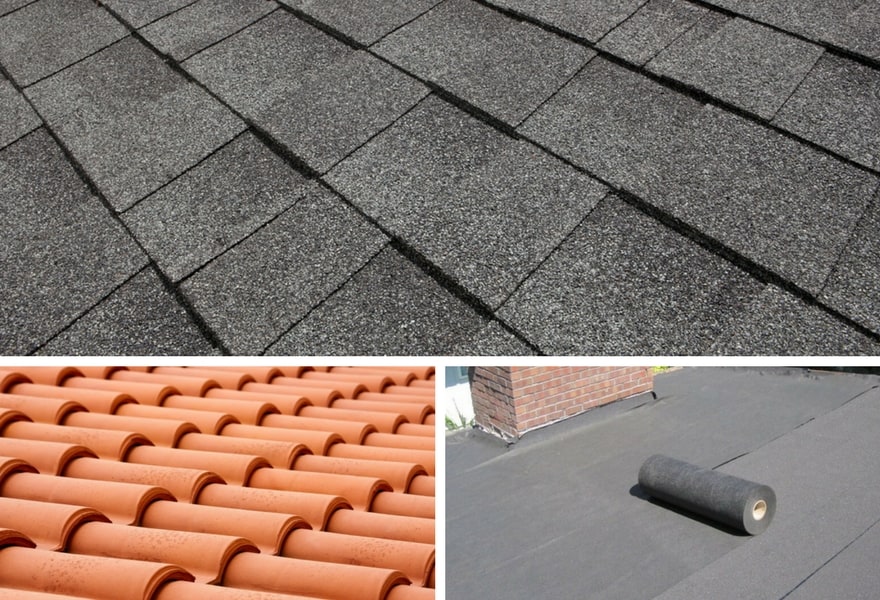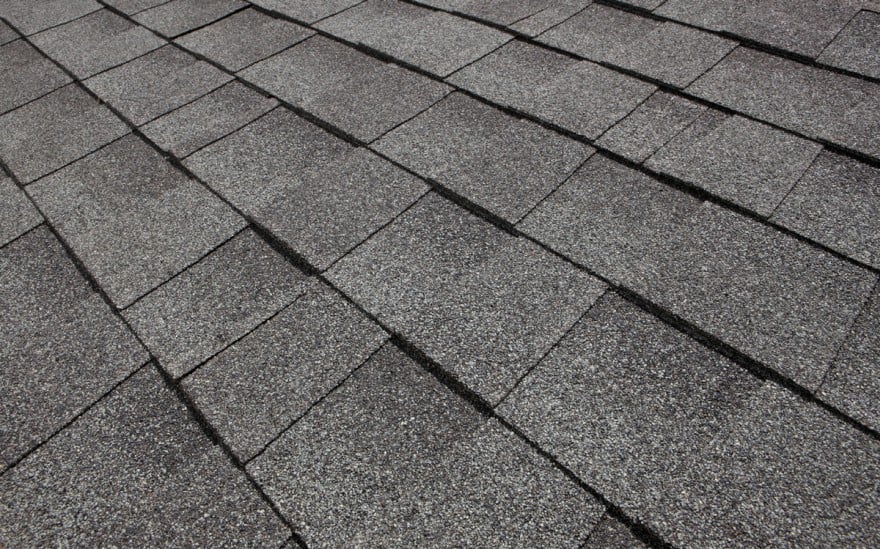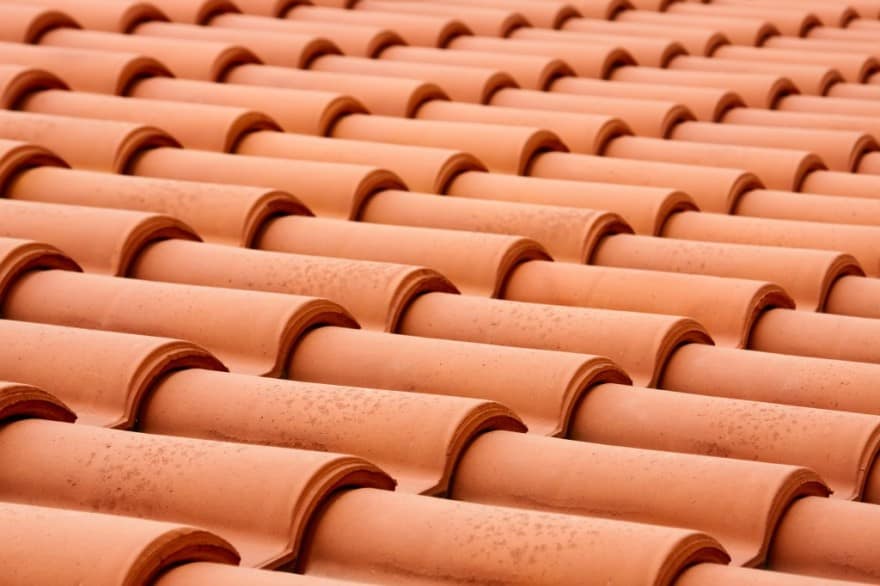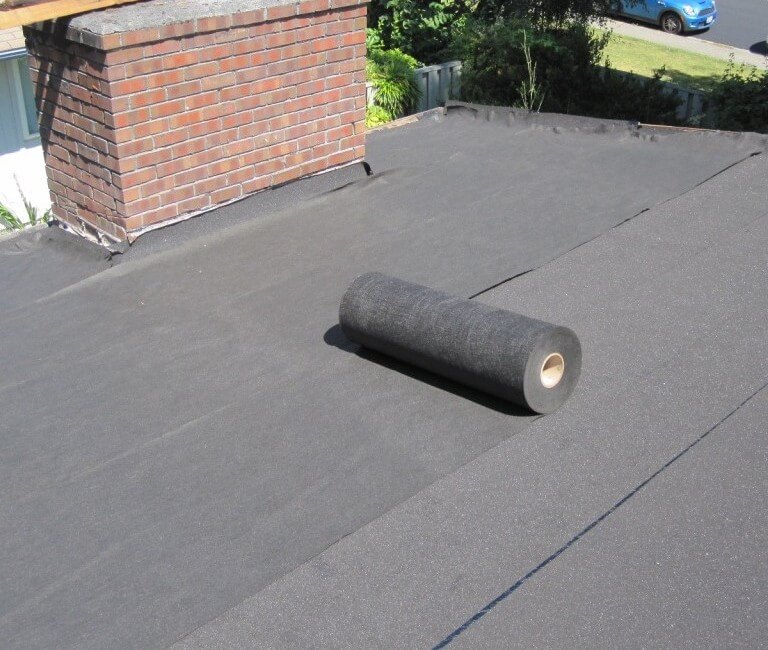Shout it From the Rooftops: Will you Pick Shingles, Tiles or Rolled Roofing? Few repair jobs have a tendency to strike fear in the hearts of homeowners more than being told that you need a new roof. It’s not just the cost that’s alarming, but the inconvenience, too.

After the shock wears off, you’ve a decision to make that was easy back in the day. You hired the roof guy. He slapped on shingles. Perhaps the most extreme decision you had to make was the color of those shingles.
But it’s a new day in the roofing industry and you’ll be asked to choose between roof shingles vs tiles, roof shingles vs rolled roofing or perhaps you’ll evaluate all three.
In terms of innovation, homeowners often take a pass on old-fashioned shingles and decide between roof tiles vs rolled roofing. If price is no consideration, learning about the pros and cons of these two can help speed your decision before the next leak reminds you of the urgency of your situation!Roof shingles: Variety is the spice of life
If you haven’t shopped for roof shingles in forever, you’re in for a surprise: these days, you’ll be offered five types of shingles and each one has its own merits and downsides.
Asphalt shingles

This is your choice if you don’t want to spend a fortune and like the look of shingles. Asphalt shingles come in three types: 3-tab, laminated or architectural, but they won’t hold up as long as other types of singles.
Tile shingles
could remind you of terra cotta roofing materials found in architecture classified as Southwest or Spanish Colonial. Expensive to purchase and install, you can count on these being around twice as long as asphalt shingles.
Metal shingles
may also last up to 50 years, which is why they’ve been a perennial favorite in and around the Rocky Mountains and Northwest for decades. Now, metal shingles are seen everywhere because they’re both inexpensive and attractive.
Wood shingles
are perfect for homeowners who love the look of rugged, earthy shingles that contribute to a home’s all-natural vibe. Redwood and cedar are used most often, but unlike asphalt, you’ll pay a steep price for up to 50 years’ worth of charm.
Slate shingles
made from quarried materials, are beautiful and durable. New England farmers chose slate for their barns since this type of shingle will easily last 50 years–albeit at a high price. These are the most expensive shingles on this list.
Roof tiles: Aesthetically beautiful-but pricey

There’s currently lots of confusion about the difference between roof shingles vs tiles given the proliferation of materials that are used to make both. You’ve already learned that shingles can be pricey. But did you know that tiles come in myriad price points?
There are 7 common types of tiles on today’s roofing market:
- concrete,
- ceramic,
- composite,
- bituminous,
- polymer-sand,
- copper,
- metal.
Rolled Roofing: kiss shingles and tiles goodbye

A boon for folks with flat roofs, the rolling roof revolution has impacted every shape of roof on today’s market.
Rolled Roofing Material
Like tile and shingle choices, there’s lots of variety in material, including common rubber, EPDM (recycled rubber, sawdust and slate dust), TPO (polypropylene and ethylene-propylene rubber) and Bitumen (asphalt based).
In North America, the Asphalt based rolled roofing is very popular and consists of organic felt or fiberglass mat, saturated with asphalt.
Regardless of composition, almost all rolling roof materials come in 100-square-feet rolls that measure around 36 feet long by 36 inches wide.
As you’ve noticed, there’s rubber in one form or another in most, and today’s homeowner often seeks a more exotic roofing material which brings them to the debate over roof shingles vs rolled roofing.
Rolled Roofing Cost
If you seek the cheapest option, it’s common rubber. If you’re a steward of the environment, choosing EPDM amalgam could be compelling since this type of roofing is made from recycled materials.
TPO rolled roofing material relies upon synthetics and comes with an affordable price tag, while Bitumen is fairly new to the roofing material market and relies upon adhesive bonding to keep materials fused together.
If we consider the Asphalt material type (Bitumen), the total cost of rolled roofing is around $1.5 to $3 per square foot (including material + installation cost). If you want to remove the old roof material, the price of the labor will be more (maybe add $1 to $2 extra per sq.ft).
Pros and Cons of Shingles vs Tiles
Which is the right tile for your roofing project? Use these criteria to make an informed decision:
-If you’ve got an unlimited budget, tile, in most cases, is likely to be double the price of shingles and if you go for a luxe material like copper and have a huge roof, being on the Fortune 500 richest list couldn’t hurt.
-Do you live in an area that’s assaulted by lousy weather and/or high winds? Shingles don’t stand a chance-even pricey ones-while tile is tenacious, durable and can stand weather extremes much better.
-Is heavy snow a fact of life? Shingles don’t fare well in cold climates because temperature extremes impact them more than tile. The repeated weight and constriction of temperature fluctuations can make quick work of shingles–especially cheap ones.
-While warranties come with all roofing materials and roof types, the sheer longevity of tiles over shingles means you benefit from the former. If the prospect of a 50-year-old tile roof over a 20-year-old shingle roof doesn’t excite you, perhaps the longer warranty length will.
– Not every house can support a tile roof, while every house can be shingled, thus weight-bearing walls must be strong enough to support heavy tile roofs. You could be better served with a pricey shingle if structural weight proves problematic.
Rolled Roofing vs. Shingles
Asphalt shingles are the most common roofing option for residential properties. However, rolled roofing offers many of the same features. Both roofing materials consist of a base mat with a layer of asphalt that is covered in granules.
While both options use a similar manufacturing process, there are several major differences. Rolled roofing is manufactured in large rolls, typically measuring 36 inches by 36 feet. These rolls are also manufactured with thinner layers of base materials and asphalt.
As shingles need to be cut into small shapes and feature thicker layers, they tend to cost more per square foot compared to rolled roofing. The installation of asphalt shingles also takes longer as the shingles need to be individually positioned, which increases the cost of installation.
One shingle typically covers one square foot. To cover a 36 x 36-foot section, you may need 1,296 individual shingles. 12 standard rolls of rolled roofing can cover the same area.
In most cases, rolled roofing is much cheaper and easier to install. However, asphalt shingles also offer several advantages. Shingles provide a wider selection of styles and colors while rolled roofing is mostly available in black, gray, or tan.
Due to the interlocking installation of the shingles and the thicker layers of materials, shingles also tend to last longer. The average lifespan for an asphalt shingle roof is about 20 years while asphalt rolled roofing typically lasts five to eight years.
The limited lifespan of rolled roofing restricts its applications. It is rarely used on occupied structures such as the main home on a residential lot. However, rolled roofing is a cheap roofing solution for unoccupied structures including sheds, garages, and other buildings with a low pitch.
In the end, rolled roofing provides the most economical option for roofing unoccupied structures. The rolls are inexpensive and easy to install. However, asphalt shingles offer three to four times the lifespan and more design choices compared to rolled roofing, making them the preferred choice for roofing your main dwelling.
Shingles vs Tiles vs Rolled Roofing
We know what you’re thinking: Wasn’t it easier to make a decision in the past when there were fewer options? In fact, count your blessings because new materials can give you the look you seek that fits into your budget.
Your residence is as unique as your budget. Some folks like to buy the best of the best and pick tiles simply because they’re elegant, make a home look more expensive and sophisticated. Often, a design choice is made to match regional architectural style.
Bottom line is that shingles remain the choice of homeowners on tight budgets, tiles will always promise longevity at a price, and a rolling roof can shorten installation time courtesy of a small crew and an equally small bill if you’ve chosen common rubber.
Shingles will always be the nostalgic fallback and if you can afford a pricey shingle, you get more years of wear. Will those shingles stick around as long as tiles? That’s unlikely. And remember that shingle installation will have dudes pounding away with staplers longer than laborers installing a rolling roof.
Finally, you get a bonus if shingles are your choice: if you find that you dislike the roof color you’ve chosen, you’re not stuck with those shingles for the next 50 years! Lots to think about, homeowner. We hope this review helped.
Related Posts
- Roof Rafters Vs. Trusses – Which One is Better for Home Roofing?
- The Different Parts of a Roof for Houses Explained
- Innovative Roofing Material Options for Your Home
- 18 Different Types and Styles of Home Roofs With Pictures
- Comparison of Shiplap vs “Tongue and Groove” vs Beadboard Wall Paneling
- What Type of Plywood is used for Roofing? Size and Thickness Guide
My wife and I have been looking to make some upgrades to our house now that we’ve been earning more money. I appreciated you going into detail about tile shingles and how they bring that Spanish colonial aesthetic to the house while still being durable because my wife has opted for a more classic foreign aesthetic for the rest of the house and this will definitely fit in with her choices. I’ll be sure to show her your article so we can decide what to choose for our new roofing material before talking to a contractor. Thank you!
My daughter and her husband are renovating their house in New Jersey. They have been told that because of the slope they need to use a rolled roof in one of the of the section of additions. I was wondering if you did a rolled roof with shingles over it can they get more life span to match the shingle 25 years? What would that life span be? The majority of the roof will be shingle.
Lanny, sorry but I haven’t done anything similar (i.e shingles over rolled roof).
You must have proper Acceptable Substrate for shingles such as Plywood, OSB, wood planking etc so probably having shingles over rolled roof won’t work.